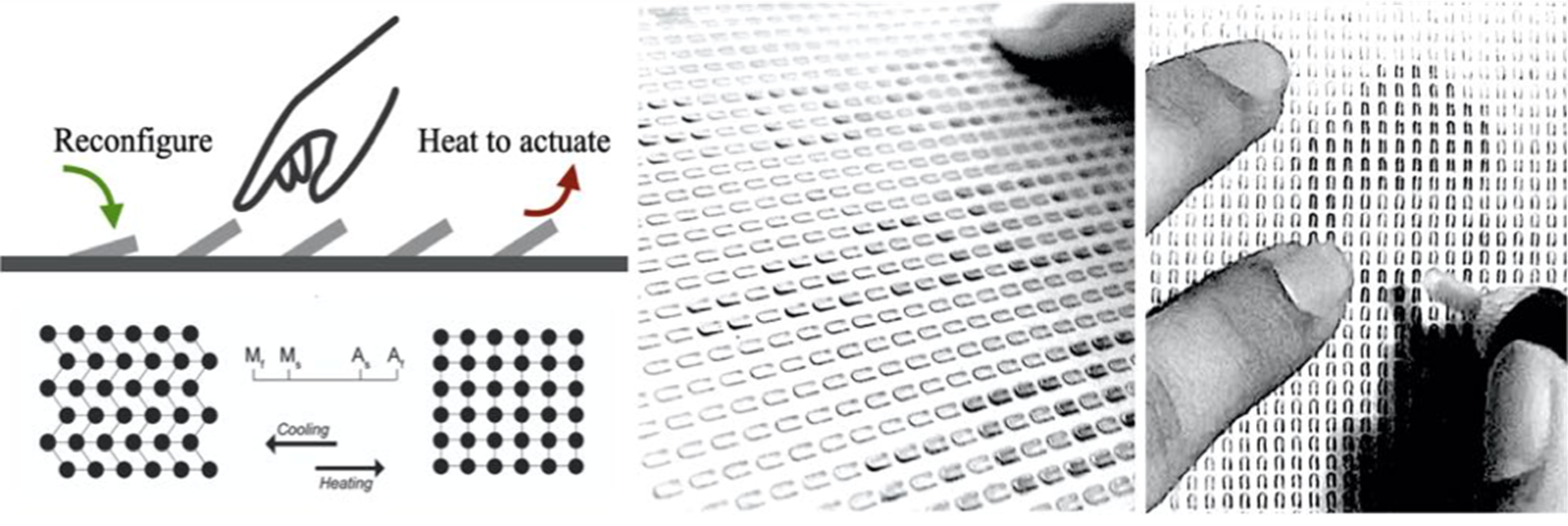Case Study: Tacilia, Designing Interactive Technology for Blind Students
Tacilia started from the applied problem of how to enable children who are blind or have partial sight to be better able to engage with Science Technology Engineering Arts and Maths (STEAM) education. By investigating the problems faced in the classroom the need for a multiline, refreshable Braille and tactile graphic interface was identified to help children read books and explore tactile diagrams to make sense of graphs, charts and other (normal) visual information. The project is being developed at UCL with collaborations across the Global Disability Innovation Hub, Institute of Making, UCL’s Interaction Centre (UCLIC), with in the wild studies conducted in India with the Indian Institute of Technology Delhi (IITD).
The problem:
Tacilia’s overall aim is to address a small subset of an immense or wicked problem, that of Quality Education as defined by the UN in Sustainable Development Goal 4 (SDG4) [454]. SDG 4 ensures quality education for all children including those with visual impairments, which in turn enables upward socioeconomic mobility and is a key to escaping poverty [454:4]. It is important to note that a far greater population of people with sight loss live in lower- and middle-income countries where among children, the prevalence can be as high as 1.5 per 1000 children [60]. We explored this situation and worked with local schools for the blind in India to observe classroom learning and teaching experiences of students and educators. What he observed was that despite the growing availability of computers and access to ICT, existing education practices for blind children are depended on printed tactile resources which includes Braille books, Tactile graphic books, Braille slates, Perkins Braille Typewriter and other non-standard frugal tactile materials that are custom made by special educators. These mediums had significant limitations when it came to teaching and learning STEAM subjects.
Applied and Basic Research Combined:
This exploration of an applied and practical problem was followed by an investigation in existing academic and market literature that showed the ways in which research across the world is trying to address the problem. Combining the practical experience and the basic knowledge, the need for development of an affordable multiline braille and tactile graphic display device was clear. This device should enable the presentation of braille and tactile graphics on the same display so that students are able to read, create and learn on a single device. Existing products have a high cost due to the complexity of actuators that are used to display tactile information on such devices. We therefore worked at a very fundamental level to invent a new reconfigurable tactile display technology which presents both Braille and Tactile Graphics as has called it Tacilia [45]. I have lab tested this display using a variety of methods based on which he has technically improved its design and performance. The display meets the Braille dimensional standards as prescribed by UKAAF and renders a sharp and clear tactile information. With its new design, new possibilities for Disability Interactions have emerged. For instance, freehand erasable tactile drawing is now possible through Tacilia, which previously was very hard for blind students [46]. Recent research work from the group has also identified a set of design heuristics to present tactile graphics and shapes on such a refreshable tactile display (under review at CHI 2022).
Tacilia is refreshable but its design largely reduces the number of moving parts and components to present tactile information, due to which it can make refreshable tactile display devices exceedingly affordable. This will help to overcome the global shortage of printed tactile resources such as paper-based Braille and tactile graphics based on thermoformed sheets or swell paper. Forthcoming research with Tacilia investigates ways to digitalize the display so that computer generated text and graphics (digital media) can be directly translated and presented in Braille and tactile diagrams. This will be facilitated through an Open-Source software with which anyone in the world can translate any static digital document (.doc, .pdf, html, .jpg, .png, .bmp, .ppt, .xlsx etc.) into its tactile form. Educators will be able to translate books, presentations, and other educational material easily in its tactile form for their blind students while students will be able to access websites and other previously inaccessible documents in their tactile form. For visually impaired users to better interact with such a display, research is also being carried out to explore the possibility of using a voice user interface (VUI) to augment the tactile interaction.
Possibly the only way in which this work can make a real-world impact and improve the educational experience of visually impaired students is when it reaches their hands and it is being used, which will open up more avenues for further co-development. Therefore, GDI Hub is setting up the necessary platform to commercialize Tacilia. For updates about this project, please follow www.hellotacilia.com

Figure 3.2: Tacilia is a passive shape-changing display made from a single sheet of Nitinol. As shown in the picture, heat can be applied using a hot-air pencil to raise the individual pins that create tactile graphics. The graphic drawn can be erased by manually pressing on the pins.